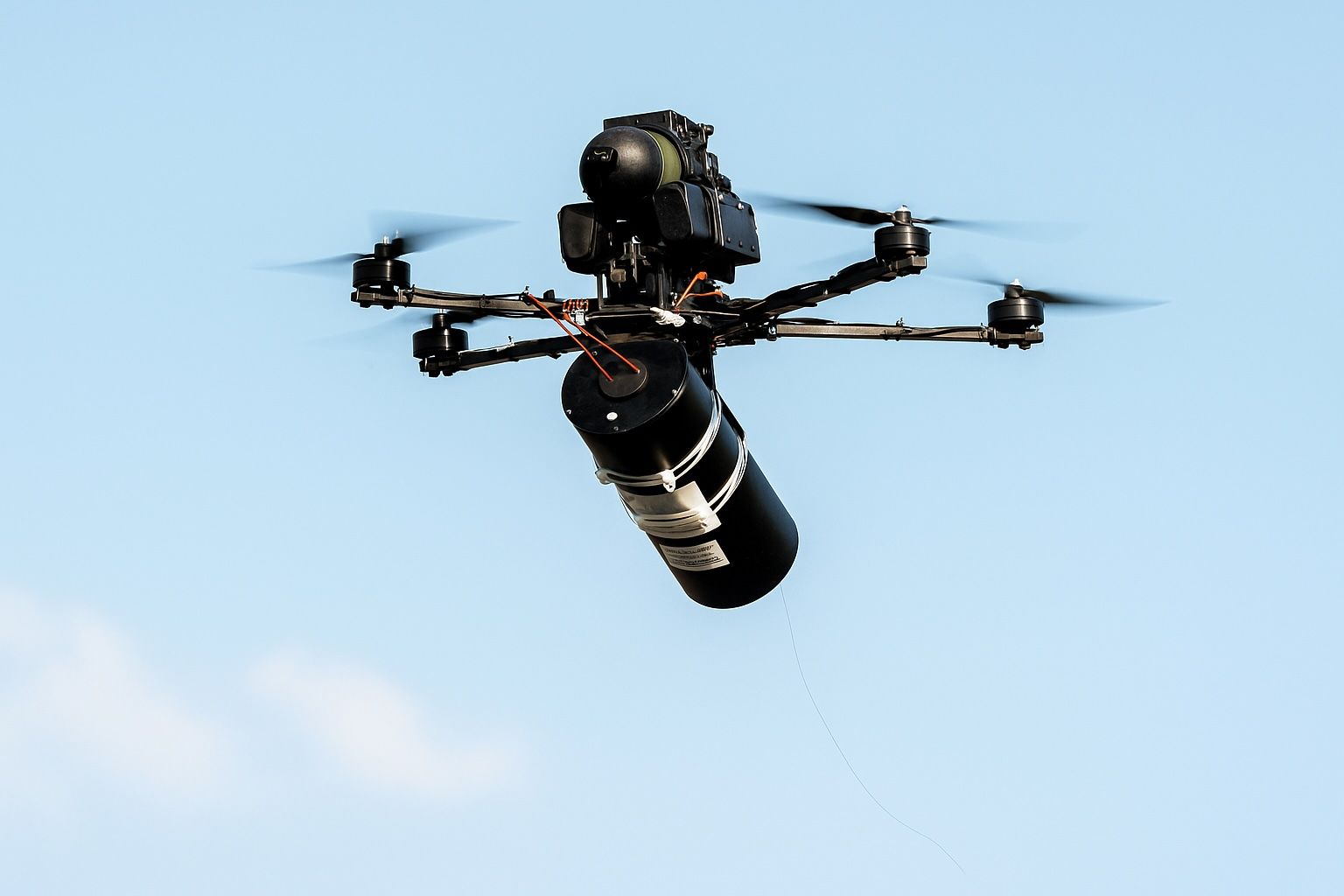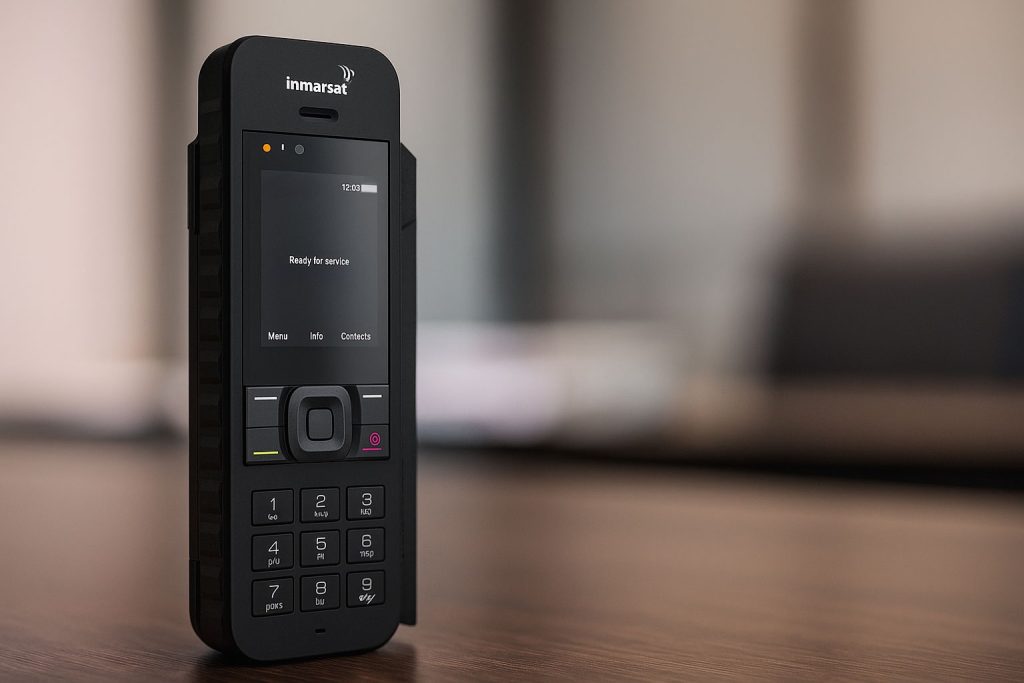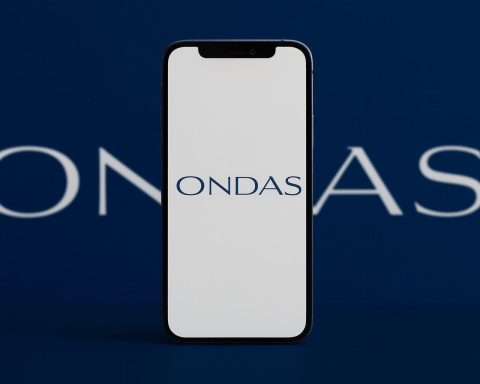- Fiber-optic drones carry control commands and high-bandwidth video via a tether, delivering a 1 Gbps (1000Base-T) link with near-zero latency and immunity to RF jamming.
- Fiber communications were pioneered by Charles Kao in 1966 and proven practical by 1977, enabling high-bandwidth data transfer for drones.
- Russia deployed fiber-tethered kamikaze FPV drones in spring 2024 during the Ukraine conflict, achieving demonstrated ranges of 20–30 km.
- By late 2024, Ukraine’s 3DTech with the Khyzhak REBOFF series and Russia’s Ushkuynik group’s Knyaz Vandal were among the first operational fiber-drone models.
- In the 2010s, tethered systems from Elistair and Hoverfly used Kevlar-based tethers for persistent surveillance, typically 50–150 meters long.
- Some tethered drones can hover indefinitely if the ground tether provides power, with Fotokite citing 24+ hours of endurance.
- A 20 km spool can weigh about 1.4 kg, reducing usable payload to about 2.3 kg on the HCX fiber drone.
- Fiber tethering provides a secure, jam-proof data link and enables operations indoors or underground, and can serve as a comms relay for ships or front-line units.
- By early 2025 Ukraine allocated Brave1 program funding to fiber drones, while the global tethered-drone market was about $300 million in 2024 and projected to exceed $460 million by 2033.
- EU regulations in 2021 created tethered UAV classes (C2, C3, etc.), with NATO evaluating fiber-optic drones for electronic warfare resilience.
Introduction: What Are Fiber-Optic Drones?
Fiber-optic drones are unmanned aerial vehicles (UAVs) that use a physical fiber-optic cable for communication instead of relying on radio signals [1]. In practice, the drone is tethered by an ultralight fiber-optic line that carries control commands and high-bandwidth data (like video) between the drone and its operator. This “fly-by-fiber” approach makes the control link immune to radio jamming and interference, since data travels as pulses of light in a shielded cable rather than via vulnerable wireless RF signals [2] [3]. The concept builds on decades-old wire-guided weapon technology – for example, the U.S. TOW and Israel’s Spike anti-tank missiles, which trail wires to transmit guidance commands – but applying fiber-optic tethers to free-flying drones is a novel development accelerated by modern battlefield needs [4].
How They Work: A typical fiber-optic drone carries a spool of thin fiber-optic cable that unreels as the drone flies. The fiber might be a hybrid tether that also contains power wires, or in some cases just the fiber (with the drone still powered by an onboard battery). As the drone moves, the cable feeds out, maintaining a direct, high-speed data link. Because fiber-optic cables can transmit data with extremely low latency and high bandwidth, an operator can receive real-time HD video and send control inputs with almost no delay [5] [6]. The physical tether means the drone’s range is limited by the cable length (which can span from a few hundred meters up to tens of kilometers, depending on design), and the drone must manage the drag and weight of the trailing fiber. Despite these constraints, fiber-optic control confers unique advantages in security (no radio emissions for adversaries to detect or jam) and reliability in electromagnetically hostile environments [7] [8].
Historical Development and Evolution
Using wires to guide munitions is not new – wire-guided torpedoes date back to WWII, and the TOW missile entered service in the 1970s – but those were one-way systems sending only guidance signals. Fiber-optic communications technology matured in the late 20th century (pioneered by Charles Kao in 1966 and proved practical by 1977 fiber telecom trials [9] [10]), enabling high-bandwidth data transfer through thin glass fibers. By the 2000s, military researchers began exploring fiber guidance for drones: notably, DARPA’s Close Combat Lethal Recon (CCLR) project in the early 2000s attempted a loitering munition controlled via fiber-optic tether [11]. DARPA eventually abandoned fiber control in favor of radio (CCLR evolved into the Switchblade drone) due to technical issues at the time [12]. For a while, the idea languished – radio links were effective and jamming wasn’t yet a dire problem, so “tethered drones” were seen as impractical or unnecessary.
This changed dramatically in the Russo–Ukrainian war (2022–present). Faced with intense electronic warfare, Russian forces in 2023 began fielding experimental first-person-view (FPV) drones that trailed fiber-optic cables instead of using radio [13] [14]. The first confirmed use was around spring 2024, when Russia deployed fiber-tethered kamikaze drones in Ukraine’s battlefields, soon followed by Ukraine developing its own versions [15]. Battlefield reports from 2024–2025 credit these drones with enabling strikes that were impossible for radio-controlled UAVs under heavy jamming [16] [17]. This wartime emergence marked the true birth of fiber-optic drone technology as a practical tool. By late 2024, both sides were in a race to innovate fiber-optic drones: Russian volunteer teams (e.g. the Ushkuynik group) produced early models like the “Knyaz Vandal” FPV drone [18], while Ukrainian firms (such as 3DTech, maker of the Khyzhak REBOFF drone series) soon followed [19] [20].
Meanwhile, outside of military use, the concept of tethered UAVs was advancing for other purposes. Companies like Elistair and Hoverfly throughout the 2010s developed drones on a Kevlar-strength tether (often with integrated fiber) mainly for persistent surveillance and communications – essentially flying generators/cameras that can stay aloft for hours by drawing power from the ground. These systems, however, typically had short tethers (50–150 m) and were confined to hovering relatively close to their base. The latest evolution in the 2020s merges these ideas: lightweight fiber-optic cables hundreds of meters or even dozens of kilometers long, enabling drones that can both fly long-range missions and/or hover indefinitely while maintaining an unbreakable data link.
Advantages of Fiber-Optic Tethers
Using a fiber-optic tether confers game-changing advantages for certain drone applications:
- Immunity to Jamming and Interception: Unlike radio waves, signals in a fiber-optic cable can’t be jammed or spoofed by electronic warfare. Fiber-optic drones have proven effectively unjammable – they remain controllable even in the most intense RF interference or GPS jamming environments [21] [22]. This makes them impervious to EW (Electronic Warfare) attacks that routinely disable regular drones. Additionally, they emit no RF signal, so an enemy cannot detect the drone or its operator by listening for radio emissions [23] [24]. Communications are also inherently secure from hacking, since one would need physical access to tap the fiber [25].
- High Bandwidth & Low Latency: A fiber link supports massive data throughput with minimal delay, far beyond what standard drone radio links provide [26] [27]. Operators can receive real-time HD or even 4K video feeds with no compression artifacts, and control signals have virtually zero lag. For example, a fiber tether can provide a 1 Gbps (1000Base-T) connection, roughly 100× the bandwidth of typical wireless links, ensuring a crystal-clear video feed and responsive control at long range [28]. This high fidelity is ideal for intelligence, surveillance, and reconnaissance (ISR) missions where detail and timing are critical.
- Reliability in Complex Environments: Fiber-optic drones can operate in places that cripple normal drones. Dense urban areas, indoor structures, forests, or other RF-choked environments are feasible for fiber drones because physical obstacles don’t impede the tether’s signal as they would radio [29] [30]. For instance, a fiber drone can fly inside buildings or underground tunnels while maintaining communication – something nearly impossible for untethered drones due to signal loss [31]. The tether also isn’t affected by electromagnetic interference, so fiber drones work in high-EMI zones like around power plants or heavy machinery where radio drones might malfunction [32] [33].
- Stealth and Stand-off Control: Because the control link is via fiber, the drone can be operated covertly. Neither the drone nor operator gives off detectable radio signals, making it extremely hard for adversaries to pinpoint their location [34]. Armies have used this to fly kamikaze drones from a safe position 10+ km away without alerting enemy EW units [35] [36]. Even when loitering quietly (engines off), a fiber-linked drone could wait as an ambush device without any emissions (some reports note they can “idle” on the ground awaiting targets, since minimal power is needed to maintain the fiber link) [37]. This level of stealth and control is a huge tactical advantage.
- Unlimited Endurance (for Powered Tethers): If the tether also carries power (as in many commercial tethered drones), the UAV can stay airborne indefinitely. For example, tethered drones used as aerial observation posts can hover for 24+ hours given a steady ground power supply [38] [39]. This is invaluable for persistent missions like event surveillance, border security, or emergency response coordination. (Note: warzone fiber-FPV drones typically do not carry power in the cable – they use onboard batteries – but the concept is evolving. A recent scientific study even demonstrated that a fiber-optic tether could transmit kilowatts of laser power along with data, hinting at future drones that receive power via fiber-optic laser delivery [40].)
- Precision & Networking: The tether provides a stable reference and can even be used creatively after flight. In one case, a fiber-optic drone was suggested to act as a “cable layer”, dropping a live fiber line across the battlefield to create an instant high-bandwidth network link to forward positions [41]. Additionally, fiber control allows many drones to operate in close proximity without radio interference – no need to worry about frequency deconfliction. This could enable swarms of fiber drones or simultaneous missions that would overcrowd the RF spectrum if all were wireless [42].
Disadvantages and Practical Limitations
Despite its benefits, fiber-optic tethering introduces several drawbacks and challenges:
- Limited Range & Mobility: A fiber drone’s range is capped by the cable length and drag. Many tethered drones are limited to a few hundred meters altitude or radius (common lengths are 100–300 m for commercial tether systems [43]). Even the long-spool military versions, while extending kilometers, max out around 10–20 km in practice [44]. This is far less than the range of high-end wireless drones which can use satellite links or long-range radio to go dozens or hundreds of km. The tether also physically tugs on the drone – high speeds or abrupt maneuvers are constrained by the need to unreel smoothly and avoid snags. Terrain can block or sever the tether: flying through dense forest or urban terrain risks the fiber getting caught or cut, which instantly kills the connection [45] [46]. Essentially, the drone trades freedom of movement for a hardened comm link.
- Tether Weight & Payload Penalty: The drone must carry the weight of the fiber (and possibly a spool mechanism). While these micro-cables are lightweight, over long lengths they add up. For instance, a 10 km fiber might weigh a couple of kilograms. One modern fiber drone (the German HCX) can carry ~5 kg total, but a full 12-mile (20 km) spool consumes ~1.4 kg of that, reducing the usable payload to about 2.3 kg for sensors or munitions [47]. This means smaller payloads or shorter flight times if extra batteries are needed to haul the tether. The tether also adds drag, modestly reducing flight efficiency. Overall, a fiber-optic UAV typically can’t lift as much or fly as fast/far as an equivalent untethered model because it’s towing a line.
- Operational Complexity: Deploying a fiber drone is more complex than a standard drone. There’s a ground apparatus for the spool (which may be motorized to reel the cable in/out) and careful procedures to avoid entanglement or fiber breakage during launch, flight, and recovery [48]. High winds or the drone’s own prop wash can whip the cable around. Cable management is critical – if the fiber unspools too easily, it may pay out too fast; if it twists or snags, it can snap [49]. All this requires additional training and gear. In a military context, operators must also plan for tether cut-off if the drone is about to be captured (to protect sensitive tech). In a civilian context, setting up a tethered drone might involve more time and manpower than a grab-and-go quadcopter.
- Physical Vulnerability: The fiber tether itself is a thin lifeline – literally. It can be shot, cut, or broken by physical impact. Enemies have learned that while they can’t jam a fiber drone, they can try to shoot the drone or sever its cable with gunfire or lasers [50]. Even natural hazards like a tree branch or rotor strike could sever the fiber. Once the tether is cut, the drone loses communication (unless it has a backup radio or autonomy to return). Thus, fiber-optic drones are “unjammable” but not invincible – they may be easier to neutralize with kinetic air defenses (e.g. small arms, anti-drone nets, or interceptors) than swarms of tiny radio drones, since the fiber drone often needs to fly a mostly straight path toward targets and can’t hide behind signal clutter [51]. The dangling cable can also make it more prone to snagging or being dragged.
- Regulatory Hurdles: The use of tethered drones exists in a grey area of aviation regulations. On one hand, regulators see tethers as a safety mitigating factor (a tethered drone can be considered more like a kite or balloon). For example, in the U.S., actively tethered public safety drones like the Fotokite are exempt from certain FAA requirements (they can operate beyond visual line of sight and over people with less red tape, since the tether controls the area of operation) [52] [53]. On the other hand, a long tether introduces other concerns: risk of entangling with other aircraft, the need for reserved airspace if cables stretch hundreds of meters, and classification of the drone in appropriate categories. European Union drone regulations in 2021 created specific classes (C2, C3, etc.) that cover tethered UAVs, aiming to incorporate them into the legal framework safely [54]. Operators still must ensure the tethered flights don’t pose hazards (e.g. a broken fiber falling could pose entanglement or litter issues). As the technology is new, regulators globally are playing catch-up to update standards for tether strengths, flight ceiling limits, and operational approvals for fiber-optic drones.
- Environmental & Cost Factors: Using one-way fiber spools (as in military FPV drones) means losing or retrieving kilometers of fiber each mission. Battlefields in Ukraine have reportedly become littered with discarded fiber-optic strands, raising concerns about plastic pollution (since the fiber jackets are polymer-based) [55]. Recovering and disposing of used fiber adds logistic overhead. Cost is also a consideration: while fiber itself is not expensive per meter, the specialized spools, slip rings, and high-end optical transceivers add to drone cost. Training and maintenance for these systems will be costlier than for simple radio drones.
Use Cases Across Sectors
Military Applications
Military use has been the driving force behind fiber-optic drone innovation, especially highlighted by the war in Ukraine. The primary military applications include:
- Kamikaze Attack Drones: Both Russia and Ukraine now deploy fiber-optic guided FPV drones carrying explosive warheads (essentially wired loitering munitions). Operators can pilot these drones through complex terrain at low altitude and directly into targets (vehicles, bunkers, even through windows) with pinpoint accuracy [56]. Crucially, they maintain control right up to impact, even under heavy jamming, ensuring high hit rates. Russian units first used them at scale in 2024 to devastate Ukrainian supply convoys, as the unjammable drones rendered traditional EW defenses useless [57] [58]. Ukraine has since fast-tracked its own fiber attack drones, realizing their necessity after experiencing Russian successes [59]. These drones typically spool out several kilometers of fiber behind them as they fly one-way to the target. Ranges of 20–30 km have been demonstrated in Ukraine for such attacks, far beyond the “radio line-of-sight” range of normal FPV drones [60]. The impact has been profound: previously “safe” positions behind heavy jamming or in GPS-denied areas are no longer safe. As one Ukrainian operator put it after a successful fiber-optic strike, “That first time I used the fiber optic, I never wanted to go back to regular [radio]” [61].
- Reconnaissance and ISR: Fiber-optic drones are used for short-range but high-risk reconnaissance, especially in electronic warfare-heavy zones. They can fly into enemy territory to spot targets or guide artillery without fear of losing the feed. In dense urban combat, a fiber drone can even be sent inside buildings or underground for scouting, places where radio drones fail [62]. Commanders have likened the capability to having a reliable “wired eye in the sky” that can peek under the enemy’s EW umbrella. For instance, Russian forces employed fiber drones to watch roads and direct fire in real time, effectively shutting down Ukrainian movements in certain sectors [63] [64]. Because of the tether, these ISR drones can hug terrain and remain low (avoiding radar), and yet never lose signal even if they duck behind hills or trees. The constant, high-definition video feed gives forces a significant situational awareness edge [65] [66]. On the flip side, both sides are now seeking ways to detect these “invisible” drones (e.g. acoustic sensors or spotting the glint of the fiber line) since electronic detectors are ineffective [67].
- Secure Communication Relays: Another emerging military use is deploying tethered drones to act as communication nodes. A fiber drone can function as a temporary fiber-optic relay tower – essentially dragging a comms line over obstacles. Ukrainian forces, for example, have considered using fiber drones to extend broadband links to front-line positions where radio and conventional comms are knocked out [68]. Also, navies and armies are looking at tethered drones (from vehicles or ships) to raise radios or antennas higher for line-of-sight comms, with fiber carrying the data back down. The U.S. Navy has a concept of ship-launched tethered drones to extend communication ranges over the horizon [69], and the U.S. Army is fielding tethered drones as aerial antenna masts for better networking in the field [70] – these tethers often include fiber for high-bandwidth data backhaul. In all these cases, the fiber link ensures a secure and jam-proof data pipe in contested environments.
Beyond these, fiber drones have seen experimental use in ground vehicle support (Ukraine has even tethered small unmanned ground robots via fiber to deliver supplies under fire [71]) and in air defense testing (trying to create drones that resist enemy jamming). Importantly, the proliferation of fiber-optic drones has triggered a tactical shift: by 2025, both Russia and Ukraine view them as a must-have capability, and NATO militaries are also taking note. Israel, for instance, announced plans to expand use of fiber-optic guided drones after observing their impact in Ukraine [72]. Western drone makers like HIGHCAT (Germany) and others have been quick to develop systems to meet the demand – the HIGHCAT HCX drone demonstrated in 2024 is a fiber-guided quadcopter purpose-built to counter heavy jamming [73] [74].
Commercial and Industrial Use Cases
- Emergency Response and Public Safety: Tethered drones are increasingly used by police, firefighters, and disaster responders. Systems like the Fotokite Sigma can be deployed at an incident (say, a large fire or search-and-rescue operation) and left to hover 150 feet above the scene for hours, providing constant live video (thermal and visible) to ground teams [75] [76]. The tether provides both power and an unhackable data link, which is crucial for security in, e.g., policing crowds or securing a perimeter. Because the drone is physically constrained, aviation authorities often allow these to be flown with less oversight – for instance, in the US they are exempt from certain FAA drone rules (considered akin to a safer “balloon on a string”) [77] [78]. First responders value that these drones require no active piloting (many can auto-stabilize on the tether) and can withstand weather that would down regular drones [79]. They act as “eye in the sky” platforms that can be immediately launched and left aloft as long as needed for situational awareness.
- Surveillance and Security: From border surveillance to large event monitoring, tethered drones offer continuous overwatch. Unlike a fixed tower, a drone can be rapidly moved and positioned for the best vantage. Law enforcement has used tethered drones for marathon races, concerts, or border checkpoints, where they need an aerial view but cannot risk losing a drone in a crowd due to signal loss. The fiber-optic tether ensures a secure video feed that cannot be intercepted, which is valuable for surveillance of sensitive areas (e.g. correctional facilities or critical infrastructure). The French company Elistair has deployed tethered drones for military base protection and even partnered with defense firms to mount tethered drones on vehicles for on-the-move surveillance [80] [81]. The ability to stay aloft indefinitely means one drone can take over the role of many patrols or static cameras.
- Telecommunications and Live Broadcast: In disaster recovery or remote areas, tethered drones can serve as temporary telecom towers. Telecom providers like AT&T have used tethered drones (Flying COWs – “Cell on Wings”) to restore cellular service after hurricanes, hoisting small cell transceivers up and backhauling the data via fiber tether [82] [83]. These drone-based cell towers can connect thousands of users on the ground and are quicker to deploy than rebuilding towers. Similarly, broadcasters have employed tethered drones to get aerial camera angles for sports or news events without the risk of losing connection (which could happen with a purely wireless drone amidst lots of RF noise in a stadium). The tether guarantees the broadcast feed won’t drop.
- Industrial Inspection in Harsh Environments: Certain industrial sites – like oil & gas refineries, power plants, or magnetic/EMI-heavy zones – are challenging for regular drones (GPS may falter, or radio may be unsafe near explosive atmospheres). Tethered optical drones provide a stable link in these conditions. For example, a tethered drone can inspect the inside of a vast fuel tank or navigate around high-voltage equipment while the operator safely controls it via fiber from outside, with no worry about losing the feed. The fiber tether is immune to electromagnetic noise that could overwhelm radio receivers [84] [85]. This has opened up new possibilities for inspection at nuclear facilities or inside metal structures where radio signals can’t penetrate. The constant power supply from tether also allows heavy sensors (like specialized cameras or sniffers) to be carried for longer durations than a battery would allow.
- Research and Environmental Monitoring: Scientists have used tethered drones to take measurements for hours at a time at a fixed altitude (for example, air quality sampling or weather observations), something hard to do with battery drones. A tethered drone can also serve as a stable platform for calibration of instruments (since it can hover without drifting far). Additionally, some entertainment applications (drone light shows) have explored tethers for precise control of drones in dense formations, though this is limited.
Consumer/Recreational Use: For everyday hobbyists or consumer drone users, fiber-optic drones are rare – the average person doesn’t want a long cable limiting their drone’s freedom. Most consumer drones prioritize ease of use and portability, which a tether encumbers. However, there are niche hobby applications: a few drone racers and FPV enthusiasts have experimented with tethered setups to eliminate video latency and ensure a solid link for long-distance flights (especially in high-interference areas). Some homeowners have even proposed tethered drones as quasi “security cameras in the sky” hovering 24/7 above their property (with power via tether) [86]. Still, these are outliers. We are unlikely to see fiber-tethered drones become mainstream consumer gadgets due to their inherent range limitation and complexity. Instead, this tech will remain focused on professional and specialized uses where its unique benefits outweigh the inconvenience.
Recent Technological Developments & Breakthroughs
The rapid adoption of fiber-optic drones in conflict has spurred a wave of R&D to improve the technology:
- Longer, Stronger, Lighter Tethers: Engineers are refining the fiber-optic cables specifically for drone use. Advances in materials (like aramid-reinforced fiber and ultra-thin coatings) have yielded tethers that can be 20+ km long while weighing only a few kilograms, and able to withstand the pull forces of flight [87] [88]. Specialized spool systems now handle automatic payout and retraction with tension controls to prevent snags [89]. For instance, HIGHCAT’s HCX drone uses a custom-wound spool and coating so the fiber can unspool smoothly even as the drone maneuvers, and not be affected by rotor downwash or twists [90]. These mechanical innovations are crucial to make “flying by fiber” reliable outside of straight-line flights.
- Hybrid Fiber-Power Cables: There’s active development in power-over-fiber and hybrid tethers. One approach being tested is sending a high-power laser through a fiber to a photovoltaic receiver on the drone to deliver power optically (which sidesteps having heavy copper wires). Researchers demonstrated that fibers could carry significant power (potentially kilowatt levels) in parallel with data [91]. While still experimental, this could enable truly wireless power via fiber laser, effectively meaning a single fiber strand would provide both energy and control – a game changer for endurance. In the nearer term, companies like UAV tether providers are making combined copper + fiber tethers that are thinner and lighter (using advanced insulation and high-voltage transmission to reduce copper mass) [92]. The result will be tethered drones that can fly higher/longer without being as weighed down.
- Autonomy and Fail-safes: Realizing the tether is a vulnerability, newer fiber-drone systems incorporate fail-safes. For example, if the fiber breaks, the drone might automatically switch to an RF control mode or an autonomous return-to-home. The military is also combining fiber control with AI autonomy – an autonomous drone could carry a fiber for most of its mission, but if the tether is cut or an objective is reached, it can complete the task on its own (this hybrid approach is being tested to counter jamming in multiple ways [93]). Improved autopilots also help fiber drones navigate without putting too much strain on the tether (smooth pathing, avoiding over-tension).
- Detection and Counter-Measure Developments: On the flip side, because fiber-optic drones are so effective, there’s been recent innovation in detecting or countering them. Researchers have looked into acoustic sensors to hear the high-frequency noises of the spool or the drone itself, since RF-based detection won’t work [94]. Others have tried thermal cameras to spot the relatively warmer tether wire or laser systems to literally burn through tethers. While not a “development” of the fiber drone tech per se, this cat-and-mouse dynamic is pushing developers to perhaps add insulation or stealth qualities to tethers (e.g. low-IR signature coatings, or even decoy wires).
- Wider Bandwidth & Networking: Borrowing from telecom tech, fiber-drone systems are starting to use techniques like Wavelength Division Multiplexing (WDM) to increase data capacity [95]. This means multiple signals (different colors of laser light) can travel in one fiber, potentially allowing a single tether to carry multiple video feeds or to control multiple drones in a daisy-chain. Experimental setups have launched a lead drone with a fiber, and that drone acts as a hub to control other nearby drones via short wireless links – effectively a hybrid swarm where only one drone is directly tethered. The tether’s huge bandwidth could support such multi-node operations.
- Commercialization and Miniaturization: Dozens of startups and defense contractors are now entering the fiber-drone arena, which accelerates innovation. We see efforts to miniaturize the fiber optic transceivers (the modem-like devices that send/receive light signals) to make them lighter and more energy-efficient for small drones. Some hobbyist makers have even adapted off-the-shelf fiber media converters to build DIY fiber drone kits (using ultralight fishing line to carry a fiber). This tinkering and competition drive improvements in weight and reliability. As the tech matures, expect to see smaller form-factor fiber drones (perhaps even fixed-wing UAVs towing a fine fiber for long-distance recon) and more plug-and-play tether kits that can convert a regular drone into a tethered one by adding a module.
Overall, the last two years (2024–2025) have been a breakout period for fiber-optic drone R&D. What was a little-known concept is now at the cutting edge of drone technology, with breakthroughs in materials science, optical engineering, and robotics all converging to make tethered drones more capable.
Major Manufacturers and Innovators
As fiber-optic drone technology moves from theory to fielded product, several companies and organizations have taken the lead in innovating:
| Company / Organization | Notable Contribution | Location |
|---|---|---|
| HIGHCAT (High Communication Aerospace Technology) | Developed the HCX drone, a German-made fiber-optic quadcopter with 20 km range. Early 2024 demos in Ukraine showed it to be immune to all EW jamming [96] [97]. HIGHCAT engineered a special spool and lightweight fiber; their co-founder Jan Hartmann has detailed the technical challenges overcome [98]. | Germany |
| 3DTech / Khyzhak REBOFF | Ukrainian drone producer behind the Khyzhak REBOFF series of fiber-optic FPV kamikaze drones. These drones carry 10–20 km fiber spools and are optimized for different mission profiles [99] [100]. Ukraine’s Ministry of Defense backed many such startups in 2024–25, leading to at least 15 domestic companies now manufacturing fiber-optic drones by mid-2025 [101]. 3DTech’s models have been combat-tested and are part of Ukraine’s push to catch up to Russian capabilities. | Ukraine |
| Ushkuynik Tech Group | A volunteer collective in Russia that created one of the first operational fiber drones (“Knyaz Vandal”). Their work, led by innovator Aleksey Chadaev, proved the concept in battle [102]. This spurred official Russian adoption. While not a formal company, they demonstrated how fast ad-hoc teams could innovate on the battlefield. | Russia |
| Elistair | A pioneer in tethered drone systems for surveillance. Elistair’s Safe-T and Ligh-T tether stations are used with various drones (including DJI) to provide power+data via micro-tether [103]. In 2025, they secured a €3M military contract for their new Khronos tethered UAS, co-developed with Milrem Robotics [104] [105]. Elistair focuses on long-endurance tethers (100m+) for persistent ISR, which include fiber optics for high data rates. They also partnered with Rheinmetall to mount tethered drones on armored vehicles [106]. | France |
| Hoverfly Technologies | US-based maker of tethered drone platforms (e.g., LiveSky, Spectre). They provide tether systems to military and law enforcement, such as the U.S. Army’s Variable Height Antenna program (using Spectre tethered drones) [107]. Hoverfly integrates fiber-optic cables in their tethers for secure communications. They recently partnered with BlueHalo to add counter-drone sensors on tethered drones [108]. | USA |
| Linden Photonics | A specialized fiber-optic cable manufacturer producing Fly-by-Fiber MicroTethers for drones. They supply ultra-light, strong fiber-optic cables (with protective jacketing) that can extend up to 25 km for drone use [109]. Linden’s cables are designed to be durable against tension and abrasion while remaining extremely thin and lightweight [110] [111]. Their technology has been crucial for many tethered drone solutions, even if they are a component supplier rather than drone maker. | USA |
| DJI (and other consumer drone makers) | The world’s largest drone maker has dabbled in tethered options. DJI offers tethering kits (e.g., for the Matrice series) through partners – mainly for power. DJI was noted in market research as providing systems like the DJI “Zenmuse T20” tethered drone system for public safety [112]. While not fiber-focused, companies like DJI are likely exploring high-security comms for government use. Their involvement signals that tethered drones (and possibly fiber) are on the radar of mainstream manufacturers for niche markets. | China (global) |
| Defense Departments & Labs | Various defense R&D organizations deserve mention: DARPA (for early concepts), Ukraine’s Brave1 tech incubator (which coordinated rapid dev of fiber drones in 2024 [113]), and others like Israel’s MoD which is working with local companies on fiber drone integration [114]. These entities often contract the above companies or spur new ones. For example, the UK has included EW-proof drones in packages for Ukraine, indicating British firms might be innovating here too. | USA, Ukraine, Israel, UK, etc. |
This is not an exhaustive list – many new players are entering as the technology gains attention. Startups and smaller tech firms are announcing fiber-optic drone solutions or partnerships almost monthly, especially driven by urgent military demand. For instance, by early 2025, Ukraine’s drone tech cluster had “dozens of engineering teams” developing fiber-optic drones or components [115]. We can expect traditional defense giants to also jump in (if they haven’t quietly already) to incorporate fiber-optic control in their UAV offerings for electronic warfare scenarios.
Market Trends and Investment
The niche of fiber-optic and tethered drones is experiencing significant growth, fueled by security concerns and new use cases. According to industry analyses, the global tethered drone market (much of which includes fiber-optic tether systems) was valued around $300 million in 2024 and is forecast to reach roughly $460+ million by 2033, with a steady annual growth rate in the 5–6% range [116]. Other reports project similar growth, e.g. one estimate sees the market doubling from ~$160M in 2025 to ~$280M by 2032 [117]. This growth is relatively modest in percentage terms, but notably it does not yet factor the potential explosive demand from military procurement due to current conflicts – those could drive even faster expansion.
Key market trends include:
- Surging Military Procurement: The war in Ukraine has demonstrated the value of fiber-optic drones, leading to rapid investment by militaries. Ukraine itself moved to manufacture these drones domestically at scale, with thousands per month projected given component availability [118]. Western countries are funding programs to supply Ukraine with tethered drones and also to bolster their own capabilities. For example, a coalition led by the UK planned tens of thousands of drones for Ukraine – likely including advanced tethered types [119]. Israel’s interest (as reported by Globes) and NATO evaluations suggest that unjammable drones are now a defense priority. This translates to contracts for companies like Elistair (e.g., $3M contract in 2025 for allied military [120]) and likely more funding flowing to innovative startups (HIGHCAT, etc.). In the U.S., the DoD has shown interest by adding tether-capable drones to approved lists (Skydio’s X10D prototype with a fiber tether was noted as a potential “Blue UAS” for electronic warfare resiliency).
- Public Safety and Government Adoption: Outside pure military, governments are investing in tethered drones for homeland security and public safety. The market for persistent surveillance drones for police and border agencies is growing. Major drone manufacturers and integrators are creating turnkey tethered systems (e.g., Drone Aviation Holding Corp. in the U.S. developed the WATT tethered drone and saw use by agencies). The inclusion of companies like Hoverfly and Elistair in government programs (US Army, French police, etc.) shows increasing trust and reliance on tethered UAV tech [121]. More contracts and pilot programs are expected as agencies realize the cost-benefit of a drone that can “stay up all night” and never lose comms.
- Private Sector and Industrial Use Cases Expansion: Industries such as energy, telecommunications, and large-scale events management are showing more interest in tethered drones. Telecom companies see them as rapid deployment cell towers (AT&T’s use in 2018 set a precedent [122]). The oil & gas industry and infrastructure monitoring companies are investing in tether-capable drones to perform long inspections or secure facilities continuously. With drones increasingly part of enterprise solutions, having a tethered option solves the battery life problem for clients who need hours of coverage. As an example, startups like Fotokite raised significant funding to provide tethered drone solutions to fire departments worldwide. We also see venture funding going into tether technologies (for instance, companies that make specialized tether cables or winch systems are getting backing due to the anticipated demand).
- Market Competition and Pricing: As more players enter, the cost of tethered drone systems is gradually coming down (though still higher than normal drones due to the added hardware). A full tethered kit (drone + tether station) used to be very costly, limiting adoption. But competitive pressure is leading to more affordable models, especially for commercial use. This should further drive adoption in areas like media, where tethered drones could replace camera cranes at lower cost, etc.
It’s worth noting that market figures for specifically fiber-optic drones (as opposed to general tethered drones) are harder to isolate – many market reports include all tethered systems (power tethers for hovering as well as long fiber spools for military). However, given the recent high-profile use in warfare, analysts expect a spike in investment in fiber-optic guided drone R&D. Governments are likely pouring R&D funds to not be left behind. For example, by early 2025 Ukraine allocated resources via its Brave1 program specifically to fiber drones [123]; similar initiatives are probably underway in NATO. This influx of R&D money often precedes a larger market growth once products mature.
In summary, the market trend is clear: upward and expanding into new sectors, albeit from a small base. Tethered drone solutions are moving from niche to a standard option in the UAV toolkit, and fiber-optic communication is at the heart of many of these systems. If geopolitical conflicts continue to emphasize drone electronic warfare, the demand could accelerate even more rapidly.
Comparison: Fiber-Optic Drones vs Traditional Wireless Drones
It’s useful to directly compare fiber-optic tethered drones with their untethered, radio-controlled counterparts to understand where each is best suited. The table below summarizes key differences:
| Aspect | Fiber-Optic Tethered UAV | Traditional Wireless UAV |
|---|---|---|
| Communication Link | Physical fiber-optic cable (light signals) – immune to RF jamming and spoofing [124] [125]. Virtually impossible to intercept without physical access. | Wireless radio frequency (RF) – vulnerable to jamming, interception, and interference. Uses radio transmitters (2.4 GHz, 5.8 GHz, etc., or SATCOM) that can be detected and blocked [126]. |
| Data Bandwidth | Extremely high bandwidth (gigabit-class) and low latency over fiber [127] [128]. Can carry uncompressed HD video and multiple data streams in real time. | Limited bandwidth and some latency. High-end drones can transmit HD video, but often compressed. Congested spectrum or distance can reduce data quality. |
| Range | Limited by tether length and handling. Current practical ranges: ~100–300 m altitude for powered tethers [129]; up to ~20 km or more for one-way fiber spool drones [130]. Beyond that requires swapping/retrieving fiber. Physical obstacles can halt movement. | Limited by signal strength and regulations. High-end military drones can go tens or hundreds of km (using relays or SATCOM); consumer drones typically 5–10 km max (line-of-sight). No physical tether, so they can maneuver freely (subject to battery life). |
| Endurance | Potentially unlimited (if tether provides power from ground) – ideal for persistent surveillance [131] [132]. Battery-based fiber drones have normal flight times (e.g. 10–30 min) unless integrated with a power tether. | Battery-limited – most consumer drones 20–30 minutes, high-end military drones a few hours with fuel. Some hybrids use solar or other tricks, but generally require landing to refuel/recharge. |
| Mobility & Deployment | Requires tether management: setup of ground station or spool, careful launch/recovery. Less mobile once deployed (tether anchor limits relocation speed) [133]. Can be vehicle-mounted for mobility, but still tethered to that vehicle. | Highly mobile and easy to deploy – just launch the drone. Can quickly reposition or land anywhere, no tether to reel in. Better for dynamic missions over large areas (no strings attached). |
| Operational Niche | Excels in contested, high-EMI, or stationary scenarios: e.g. battlefields with heavy jamming [134], long overwatch of an event, bridging communications in disaster. Provides assured link and endurance at cost of range. Often used as a “flying tower” or guided munition. | Best for wide-area coverage and fast maneuver: e.g. scouting broad regions, delivery, agile filming, any mission where range and freedom outweigh jamming risk. Simpler and sufficient for low-risk RF environments. |
| Security/Stealth | Stealthy control – no radio emission, so hard to detect control source [135]. Link is physical, so highly secure from hacking [136]. However, the drone itself may still be heard or seen (prop noise, etc.), and the fiber could be found visually. | Emits RF signals that can be detected with scanners (revealing drone/operator positions) and potentially hijacked or jammed. Encryption helps protect data, but the presence of a control signal is a giveaway. Drones can be tracked via their radio emissions. |
| Reliability | Extremely reliable comms in any RF environment or terrain (if the fiber remains intact). Not affected by spectrum crowding, weather (for comms), or electromagnetic pulses [137]. Vulnerable to physical fiber cut which is an all-or-nothing failure. | Communication can be unreliable in crowded RF environments, beyond line-of-sight (without relays), or under deliberate jamming [138]. However, no single point of failure like a tether – losing signal may trigger failsafe (return home) and flight can continue if reconnection is made. |
| Maintenance | Fiber drones need tether maintenance (reels, fiber inspection for damage) and replacement of expendable fiber spools in one-way missions. System is a bit more complex (optical modems, etc.). [139] | Easier maintenance – just the drone and its radio. No tether hardware. Software updates to radios or spectrum management sometimes needed, but generally fewer moving parts on ground. |
Both types of drones have their place. In essence, fiber-optic drones sacrifice range and some agility for an unbeatable communication link, whereas traditional drones maximize freedom and range at the cost of being susceptible to jamming and limited by battery life. A telling example: on a modern battlefield saturated with jammers, a cheap fiber-tethered drone can reliably hit a target 10 km away, where a far more expensive radio-controlled drone would fail – but if you needed to inspect a pipeline stretching 50 km, the fiber drone could not cover that distance without many stops, whereas a long-range RF drone or one with a satellite link could.
Increasingly, hybrid approaches may appear (for instance, a drone that operates on fiber in high-risk areas and switches to radio in open areas, or vice versa). But as the table shows, the choice often comes down to mission requirements: if you absolutely require a robust, unjammable connection and can tolerate a leash, fiber-optic drones are the answer. If you need maximum coverage and independence, traditional drones remain king.
Regulatory and Operational Challenges
Deploying fiber-optic drones comes with a set of challenges beyond the technology itself:
- Airspace Integration: Tethered drones blur the lines in airspace rules. Aviation authorities typically classify drones by weight and capability, but a drone on a 200-meter tether presents a unique hazard to other low-flying aircraft (like helicopters) that may not expect a “wired kite” in their path. Regulations are evolving: authorities may mandate that tethered drones stay below certain altitudes or within restricted areas. In the EU, new drone regulations (effective 2021) explicitly consider tethered UAVs and assign them categories C2/C3/C5 with specific operating rules [140]. In the US, the FAA often treats tethered drones like moored balloons if under a certain height, requiring less paperwork, but operators must still mark the tether in some cases (e.g., with pennant flags or lights) if it’s a potential aircraft hazard. As fiber drones potentially fly further (horizontally) than a typical balloon-on-string, regulators will need to craft guidelines on maximum tether lengths, NOTAM requirements (to alert pilots of areas with tethers), and ensure that cut fiber doesn’t endanger anyone (imagine a long fiber falling near active runways – entanglement risks).
- Spectrum and Classification: One advantage is that fiber-optic drones may bypass some spectrum licensing issues (they don’t emit RF, so no worry about approved frequencies). However, this also means no transponder or remote-ID via radio, which is becoming a requirement in many regions for drones. Regulators might require fiber-optic drones to carry remote ID beacons or other ways to signal their presence electronically, since they can’t be “seen” on spectrum. There’s also the question of whether a fiber drone is considered an autonomous weapon (in military context) or just an ROV – as they get more prevalent, international law might assess them differently from standard UAVs due to their guided-munition-like nature (since they can function as one-way wired weapons).
- Operational Training and Safety: For operators, handling a tether adds complexity. Tangle and snag hazards are real – there have been instances of tethers getting caught in the drone’s own rotors or in structures. Ground crew must be trained to operate winches and perhaps to follow the drone (for mobile systems) to avoid the tether dragging over obstacles. Emergency procedures (like if a tether must be cut because a manned aircraft suddenly is on a collision course) need to be established. The fiber itself, while thin, can cause lacerations under tension (like a wire cut), so crews must handle it carefully. These safety considerations mean organizations using fiber drones have to develop new SOPs and possibly get regulatory waivers or approvals, which can be a slow bureaucratic process.
- Logistical Footprint: A big selling point of small drones is portability – a soldier or officer can carry a drone in a backpack. Fiber-optic drones, especially those with long spools or needing power stations, have a larger footprint. They may require vehicles to transport the spool system, or at least a heavy-duty case with the reel and fiber. This can complicate deployments, especially in rough terrain. Military units deploying fiber drones have noted that they often need to drive closer to the frontline so that the first part of the fiber run doesn’t get snagged on vegetation, etc., before launch. If the drone is being used from a fixed site (like a command post), that site essentially becomes a tether anchor, which could be a tactical limitation.
- Environmental Impact: As mentioned, the widespread use of disposable fiber spools in combat has an environmental angle – thousands of kilometers of fiber cables left on the ground. These are usually made of plastics that don’t biodegrade, contributing to litter and potentially harming wildlife or vehicle tracks (imagine stray fibers getting tangled in vehicle axles or ingested by animals). In civilian contexts, one has to consider if dropping or abandoning a tether is acceptable – usually not, so civilian tethered systems are designed to reel back in. But if one breaks, cleanup is an issue. Regulators might enforce “leave no trace” rules, requiring organizations to retrieve spent fiber, which itself can be dangerous if the area is contested or hard to access.
- Legal and Privacy Concerns: Fiber-optic drones used for surveillance raise the same privacy concerns as regular drones, but their persistent nature (able to watch 24/7) might draw special scrutiny. Laws may need updating to account for law enforcement use of tethered drones for continuous monitoring. Additionally, the notion that these drones are effectively “wired” could mean they are treated differently under laws of war – e.g. is cutting the tether of an enemy drone considered perfidy (interfering with a communications line) or just standard engagement? Such nuances haven’t been fully addressed yet.
In summary, while the technology races ahead, regulators and operators are working to adapt rules and best practices. Generally, there is optimism that tethered drones can be integrated safely – especially since they can be seen as a mitigated risk (a tethered drone is less likely to fly away uncontrollably, for example). As of 2025, many jurisdictions are granting permissions for tethered systems more readily than free-flying drones for certain uses (like over crowds or beyond line of sight) because the tether provides a measure of control and safety [141] [142]. Overcoming the operational challenges is largely a matter of writing guidelines and training; the regulatory challenges will diminish as agencies grow familiar with fiber-optic drones’ track record.
Future Outlook
The advent of fiber-optic drones represents a significant shift in UAV technology, and looking ahead, we can anticipate several trends and developments shaping their future:
- Standard Equipment in Military Drone Kits: Just as night-vision goggles or GPS became standard military kit over time, unjammable fiber-optic drones are poised to become a staple in advanced militaries. We can expect near-future military drone units to field a mix of wireless and fiber-linked UAVs, using each where appropriate. Russia and Ukraine have shown that ignoring fiber drones leaves one at a tactical disadvantage – so nations around the world are taking note. NATO countries will likely invest in fiber-optic versions of their existing drone platforms (or add-on kits) to ensure they can operate in high EW threat scenarios. Future platoons might carry a portable fiber-drone system for when jamming kicks in. This also implies a market for conversion kits: imagine a module that can be attached to an existing drone to add a fiber-optic control option (some startups may pursue this to capitalize on the vast installed base of drones).
- Integration with Autonomous Systems: The debate of fiber vs AI/autonomy will probably end with a hybrid approach. Autonomous drones (with AI to complete missions without comms) are seen as another answer to jamming. It’s likely future drones will have both an autonomous mode and a fiber-optic mode, using fiber when real-time human control is needed (with high-fidelity feedback) and switching to autonomy if the tether is lost or for the final seconds of an attack run to avoid tether constraints. The Forbes observation was that autonomous drones can’t relay video back until after the mission [143] – fiber ones can; so a combination where a drone can perform partial tasks on its own but still send critical data via fiber when possible could emerge. Additionally, swarming tactics might incorporate fiber – for example, one drone in a swarm could be tethered as the lead, guiding others that use its feed but communicate amongst themselves. This could yield highly resilient swarms where even if radio comms among drones are jammed, the tethered “lead” still relays target info from a human commander.
- Technological Refinement: Over the next 5–10 years, we’ll see fiber-optic drone tech refined to be lighter, cheaper, and more user-friendly. Tether reels might become smart “plug and play” devices that automatically adjust tension and perhaps even use algorithms to avoid known obstacles (e.g., geo-fenced no-fly zones for the tether itself!). The fiber cables could incorporate new materials – perhaps biodegradable fibers for military use, to address the pollution issue. Or self-coiling fibers that make retrieval easier. Also, expect better optical transceivers that allow longer cables without needing repeaters (currently, attenuation over say 20+ km might require signal boosting; improved lasers and fiber tech can push that further).
- Commercial Proliferation and New Uses: As reliability improves, more industries will think of creative uses. Tethered drones might serve as temporary traffic monitors (a city deploying them at key intersections during events), or agricultural overseers (hovering over fields 24/7 to scare pests or monitor growth via sensors). In entertainment, we might see tethered drones as permanent light fixtures or camera positions (imagine a drone tethered to the roof of a stadium, ready to provide aerial shots on demand with zero risk of drop-outs). The continuous nature could also enable new services: e.g., an on-demand “eye in the sky” rental for construction sites – a drone-in-a-box that is tethered and can pop up whenever needed to surveil the site and then dock, all without human piloting. These scenarios become more feasible as the tether systems become more automated and safety-proven.
- Countermeasures and Fiber War: On the flip side, the proliferation of fiber-optic drones will fuel a mini arms race in countermeasures. We may see specialized anti-fiber weapons – for example, shotgun shells that spread entangling fibers themselves or micro-drones that seek out and physically cut tethers. Laser systems to sever tethers (already lasers are being trialed to shoot down drones; focusing on a thin fiber at distance is tricky but possible with precision optics). There could also be cyber tactics like attempting to spoof the fiber communications by tapping into them – although extremely hard, intelligence agencies might attempt to recover dropped fibers to extract data or figure how to interfere. This means future fiber-drones might incorporate redundant fibers (multiple strands in one cable so if one’s cut, another still works) or quick-release systems to jettison a cut tether and switch to backup control. In essence, as fiber-optic drones become a fixture, militaries will devote resources to defeating them, which will push further innovation on both ends.
- Blending with Conventional Drones: Ultimately, the “fiber vs wireless” dichotomy may soften, with drones using the best of both worlds. Perhaps medium-range drones will use a fiber-optic leash when near their operator (for launch and initial guidance through the jammed zone), then release the tether and continue on radio (or one-way autonomous attack) once beyond it. This kind of hybrid operation could extend effective range while still defeating jammers. There’s also a possibility of optical wireless communication – for instance, drones using laser-based comms (free-space optics) to talk to each other or to a base station. That could achieve some benefits of fiber (high bandwidth, unlicensed spectrum) without a physical tether, though it has its own line-of-sight limitations.
The future looks bright – or rather, light-powered – for fiber-optic drones. In a world of increasing electronic warfare and congested radio bands (not just in war, but even urban environments with countless devices), having a guaranteed communication method is invaluable. Fiber-optic tethers provide that guarantee at the cost of physical constraint, and as we’ve seen, many applications find that a very worthwhile trade-off.
We can foresee a time when any critical drone operation, from delivering medical supplies in a contested region to inspecting a malfunctioning reactor, will default to a tethered/fiber-optic drone for utmost reliability. At the same time, regular untethered drones will continue to improve in autonomy and maybe new anti-jam tech (frequency hopping, etc.), so the two will coexist, each handling the scenarios they’re best at.
In conclusion, fiber-optic drones have rapidly gone from obscurity to the cutting edge of UAV innovation. They have redefined what drones can do under extreme conditions and prompted a rethinking of drone warfare and communication. As technology and tactics evolve, these “wired” drones are set to play an integral role in both military and civilian spheres, proving that sometimes the old idea of a wire can be the next big revolution in a wireless world [144] [145].
References
1. ts2.tech, 2. www.lindenphotonics.com, 3. www.researchgate.net, 4. ts2.tech, 5. www.researchgate.net, 6. www.uasvision.com, 7. www.lindenphotonics.com, 8. www.researchgate.net, 9. www.researchgate.net, 10. www.researchgate.net, 11. www.uasvision.com, 12. www.uasvision.com, 13. www.uasvision.com, 14. en.wikipedia.org, 15. en.wikipedia.org, 16. ts2.tech, 17. ts2.tech, 18. ts2.tech, 19. en.globes.co.il, 20. techukraine.org, 21. www.researchgate.net, 22. www.lindenphotonics.com, 23. www.uasvision.com, 24. www.lindenphotonics.com, 25. www.researchgate.net, 26. www.uasvision.com, 27. www.researchgate.net, 28. www.uasvision.com, 29. ts2.tech, 30. en.wikipedia.org, 31. www.uasvision.com, 32. www.lindenphotonics.com, 33. www.lindenphotonics.com, 34. www.uasvision.com, 35. ts2.tech, 36. www.uasvision.com, 37. en.wikipedia.org, 38. fotokite.com, 39. fotokite.com, 40. www.researchgate.net, 41. www.uasvision.com, 42. www.uasvision.com, 43. www.researchgate.net, 44. ts2.tech, 45. en.wikipedia.org, 46. en.wikipedia.org, 47. www.uasvision.com, 48. www.uasvision.com, 49. www.uasvision.com, 50. en.wikipedia.org, 51. en.wikipedia.org, 52. fotokite.com, 53. fotokite.com, 54. straitsresearch.com, 55. en.wikipedia.org, 56. ts2.tech, 57. ts2.tech, 58. ts2.tech, 59. ts2.tech, 60. ts2.tech, 61. ts2.tech, 62. www.uasvision.com, 63. ts2.tech, 64. ts2.tech, 65. www.researchgate.net, 66. www.researchgate.net, 67. euromaidanpress.com, 68. www.uasvision.com, 69. www.uasvision.com, 70. www.uasvision.com, 71. ts2.tech, 72. en.wikipedia.org, 73. www.uasvision.com, 74. www.uasvision.com, 75. fotokite.com, 76. fotokite.com, 77. fotokite.com, 78. fotokite.com, 79. fotokite.com, 80. www.uasvision.com, 81. www.uasvision.com, 82. straitsresearch.com, 83. straitsresearch.com, 84. www.lindenphotonics.com, 85. www.lindenphotonics.com, 86. www.reddit.com, 87. www.uasvision.com, 88. www.uasvision.com, 89. www.uasvision.com, 90. www.uasvision.com, 91. www.researchgate.net, 92. www.lindenphotonics.com, 93. www.uasvision.com, 94. euromaidanpress.com, 95. www.researchgate.net, 96. www.uasvision.com, 97. www.uasvision.com, 98. www.uasvision.com, 99. techukraine.org, 100. mod.gov.ua, 101. ts2.tech, 102. ts2.tech, 103. straitsresearch.com, 104. www.uasvision.com, 105. www.uasvision.com, 106. www.uasvision.com, 107. www.uasvision.com, 108. www.uasvision.com, 109. www.lindenphotonics.com, 110. www.lindenphotonics.com, 111. www.lindenphotonics.com, 112. straitsresearch.com, 113. ts2.tech, 114. en.wikipedia.org, 115. ts2.tech, 116. straitsresearch.com, 117. www.marketresearchfuture.com, 118. ts2.tech, 119. www.linkedin.com, 120. www.uasvision.com, 121. straitsresearch.com, 122. straitsresearch.com, 123. ts2.tech, 124. www.researchgate.net, 125. www.researchgate.net, 126. www.researchgate.net, 127. www.uasvision.com, 128. www.researchgate.net, 129. www.researchgate.net, 130. ts2.tech, 131. fotokite.com, 132. fotokite.com, 133. www.uasvision.com, 134. www.researchgate.net, 135. www.uasvision.com, 136. www.lindenphotonics.com, 137. www.lindenphotonics.com, 138. www.researchgate.net, 139. www.uasvision.com, 140. straitsresearch.com, 141. fotokite.com, 142. fotokite.com, 143. www.uasvision.com, 144. www.researchgate.net, 145. www.researchgate.net










